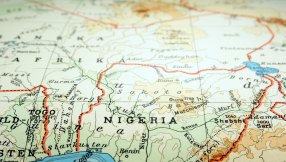After nine and a half years journeying in outer space, a National Aeronautics and Space Administration (NASA) spacecraft made history on Tuesday by making the closest contact with the dwarf planet Pluto, the farthest planet ever reached by a human probe.
NASA's New Horizons spacecraft made its historic flyby of the 2,370-km-wide Pluto at 7:49 a.m. ET, going within 7,767 miles of what used to be regarded as our Solar System's ninth planet.
New Horizons flew at a speed of 14 km per second to be able to reach Pluto in almost a decade, making it the fastest NASA spacecraft ever. It also passed by Jupiter in 2007.
New Horizons' flyby of Pluto marked another milestone in the history of space exploration, completing a tour by spacecraft from Earth of all nine objects considered as planets in our Solar System.
Alan Stern, the chief scientist of the NASA's mission to Pluto, said his entire team is proud to have made this accomplishment.
"We have completed the initial reconnaissance of the Solar System, an endeavour started under President Kennedy more than 50 years ago and continuing to today under President Obama," Stern said.
"It's really historic what the US has done, and the New Horizons team is really proud to have been able to run that anchor leg and make this accomplishment," he added.
NASA has released the most detailed photo of Pluto to date, showing an almost complete view of the brown dwarf planet.
NASA's science chief, John Grunsfeld meanwhile said the Earth can now have more knowledge about Pluto after New Horizons' historic flyby.
"This is true exploration... that view is just the first of many rewards the team will get. Pluto is an extraordinarily complex and interesting world," Grunsfeld said.
Stern, for his part, said space scientists can now study Pluto's surface and its history.
"You can see regions of various kinds of brightness. Very dark regions near the Equator, very bright regions just to the north of that, broad intermediate zones over the pole. What we know is on the surface we see a history of impacts. We see a history of surface activity," he said.





















